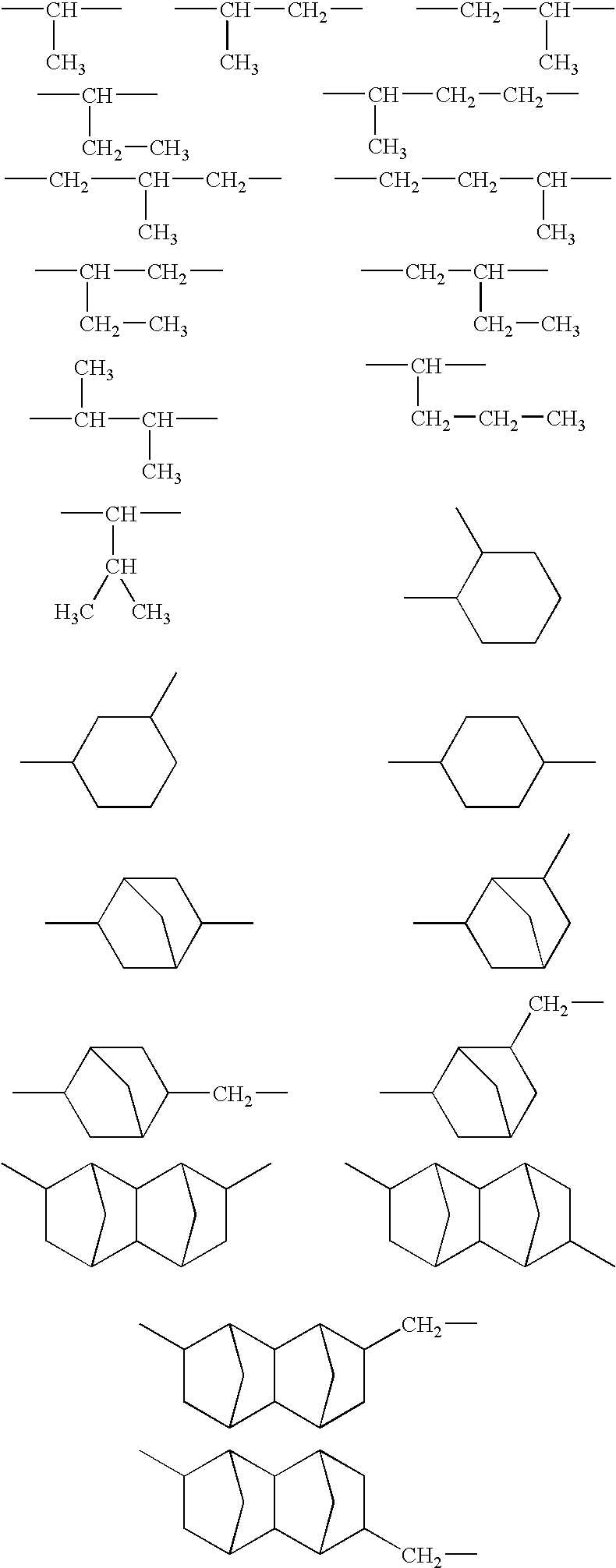Thiol compound, copolymer and method for producing the copolymer
a technology of copolymer and compound, applied in the direction of photomechanical equipment, instruments, organic chemistry, etc., can solve the problems of resisting pattern collapse, pattern collapse, and inability to achieve the final pattern, and achieve the effect of high adhesion
- Summary
- Abstract
- Description
- Claims
- Application Information
AI Technical Summary
Benefits of technology
Problems solved by technology
Method used
Image
Examples
example 1
Production of 4-mercapto-1,1-bis (trifluoromethyl)-1-butanol
[0084]Under a nitrogen atmosphere, 20 g of 4,4-bis (trifluoromethyl)-4-hydroxy-1-butene (96.1 mmol), 8.05 g of thioacetic acid (105.7 mmol), 60 g of 1,4-dioxane and 0.79 g of 2,2′-azobisisobutyronitrile (hereinafter abbreviated as AIBN) (4.8 mmol) were put into a flask equipped with a stirring bar, a thermometer and a condenser, and heated with stirring. During the reaction, thioacetic acid and AIBN were appropriately added and after confirming that a substrate was completely consumed, the reaction solution was distilled as it was under reduced pressure to yield an intermediate product, 22 g of 4-acetylthio-1,1-bis (trifluoromethyl)-1-butanol (76.9 mmol).
[0085]Then, under the nitrogen atmosphere, 14 g of 4-acetylthio-1,1-bis (trifluoromethyl)-1-butanol (49.3 mmol) obtained above, 12.6 g of methanol and 2.81 g of para-toluenesulfonate hydrate (30 mol %) were put into a flask equipped with a stirring bar, a thermometer and a ...
example 2
Production of copolymer 1 represented by the following structural formula and containing —SC3H6C(CF3)2OH group as the end group:
[0089]
[0090]In a container retained at the nitrogen atmosphere, 150 g of methyl ethyl ketone (hereinafter, abbreviated as MEK), 33.2 g of 5-methacryloyloxy-2,6-norbornanecarbolactone (hereinafter, abbreviated as NLM), 44.7 g of 2-methyl-2-adamantyl methacrylate (hereinafter, abbreviated as MAM) and 1.65 g of the compound (1-c) obtained in the example 1 as a chain transfer agent were placed and dissolved to prepare a monomer feed solution. Also, in another container retained at the nitrogen atmosphere, 20 g of MEK and 0.45 g of AIBN as a polymerization initiator were placed and dissolved to prepare an initiator feed solution. In a polymerization chamber retained at the nitrogen atmosphere, 65 g of MEK was placed and warmed to 80° C. with stirring, and subsequently, the monomer feed solution and the initiator feed solution were fed into the polymerization cha...
example 3
Production of copolymer 2 represented by the following structural formula and containing —SC3H6C(CF3)2OH group as the end group:
[0092]
[0093]In a container retained at the nitrogen atmosphere, 150 g of MEK, 28.9 g of γ-butyrolactone-2-yl methacrylate (hereinafter abbreviated as GBLM), 24.2 g of tert-butyl methacrylate (hereinafter abbreviated as TBMA) and 1.65 g of the compound (1-c) obtained in the example 1 as a chain transfer agent were placed and dissolved to prepare a monomer feed solution. Also, in another container retained at the nitrogen atmosphere, 20 g of MEK and 1.5 g of AIBN as a polymerization initiator were placed and dissolved to prepare an initiator feed solution. In a polymerization chamber retained at the nitrogen atmosphere, 65 g of MEK was placed and warmed to 80° C. with stirring, and subsequently, the monomer feed solution and the initiator feed solution were fed into the polymerization chamber retained at 80° C. over 4 hours to polymerize. Feed ratios of the b...
PUM
| Property | Measurement | Unit |
|---|---|---|
| Adhesion strength | aaaaa | aaaaa |
Abstract
Description
Claims
Application Information
 Login to View More
Login to View More - R&D
- Intellectual Property
- Life Sciences
- Materials
- Tech Scout
- Unparalleled Data Quality
- Higher Quality Content
- 60% Fewer Hallucinations
Browse by: Latest US Patents, China's latest patents, Technical Efficacy Thesaurus, Application Domain, Technology Topic, Popular Technical Reports.
© 2025 PatSnap. All rights reserved.Legal|Privacy policy|Modern Slavery Act Transparency Statement|Sitemap|About US| Contact US: help@patsnap.com



